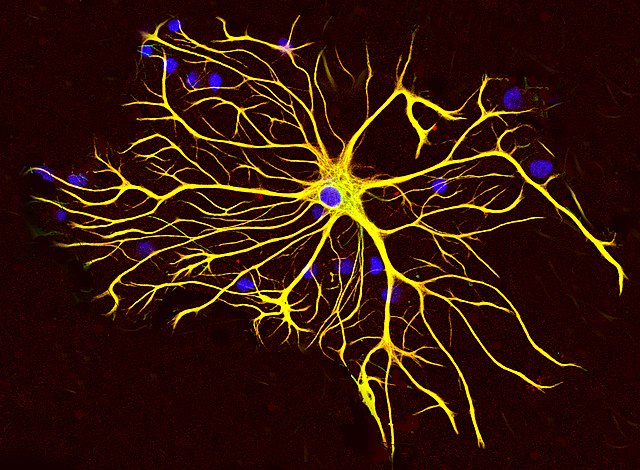In biomedical contexts, a biomarker, or biological marker, is a measurable indicator of some biological state or condition. Biomarkers are often measured and evaluated using blood, urine, or soft tissues to examine normal biological processes, pathogenic processes, or pharmacologic responses to a therapeutic intervention. Biomarkers are used in many scientific fields.
After a heart attack a number of different cardiac biomarkers can be measured to determine exactly when an attack occurred and how severe it was.
Glial fibrillary acidic protein
Glial fibrillary acidic protein (GFAP) is a protein that is encoded by the GFAP gene in humans. It is a type III intermediate filament (IF) protein that is expressed by numerous cell types of the central nervous system (CNS), including astrocytes and ependymal cells during development. GFAP has also been found to be expressed in glomeruli and peritubular fibroblasts taken from rat kidneys, Leydig cells of the testis in both hamsters and humans, human keratinocytes, human osteocytes and chondrocytes and stellate cells of the pancreas and liver in rats.
GFAP immunostaining in a glial neoplasm (anaplastic astrocytoma)
GFAP immunostaining of an astrocyte in cell culture in red and counterstained for vimentin in green. GFAP and vimentin colocalize in cytoplasmic intermediate filaments, so the astrocyte appears yellow. Nuclear DNA is stained blue with DAPI. Antibodies, cell preparation and image generated by EnCor Biotechnology Inc.



